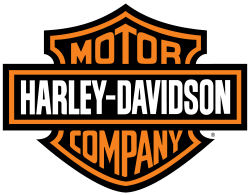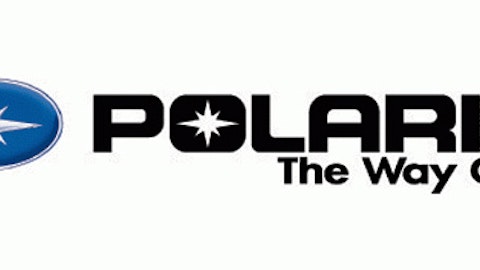
The Demographic Challenge, and the Answer
Why then has the company’s motorcycle sales fallen more than 13%, triggering a greater than 10% decline in stock price? Many believe that Harley has a serious demographics problem, and in fact, most of its recent sales are to men between the age of 40 and 50, with those in their 60s thought to be more worried about their joints and possible broken bones than riding. According to another Foolish Blogger,
The sweet spot is the mid-40s to early 50s. And with the Baby Boomers—the largest and wealthiest generation in history—now largely aged out of this key demographic bracket, Harley has a serious problem. Generation X—my generation—is not nearly large enough to pick up the slack, and Generation Y (aka “the Millennials” or “Echo Boomers”) are decades away from being in the demographic sweet spot for Harley. The number of American men aged 40-49 is set to decline through the early 2020s and won’t reach its old 2010 peak until 2035.
How does Harley-Davidson, Inc. (NYSE:HOG) plan to address this issue? Harley has launched a massive campaign to spread awareness to the younger demographic, as well as to international markets. Also included in this outreach are African-Americans, women, and Hispanics. In response to the market’s dip based on demographics, the company has launched a demographics page on its site, discussing where the numbers will come from.
This Foolish blogger believes the company will recover from this dip, but that it will dip farther in the coming months before a recovery is seen. Is the market overreacting? Of course! A great time to buy will be when the stock dips below $52 – which it probably will. This company is still very well managed, which can be seen by looking its strong ratios and financials. Capital spending is down by almost 7% from five years ago, and gross margins are still at a healthy 43.6%.
One Alternative – Polaris
In contrast, Polaris Industries Inc. (NYSE:PII), the maker of the Victory motorcycle, has only a 1% difference in its 52-week high and low price, as compared to 8% for Harley. Victory is starting to eat into some of Harley’s margins, and is beginning to achieve some strong brand recognition in its own right. The stock is another great buy, in this Foolish blogger’s opinion, as the company sells more than just motorcycles and offers the careful investor more diversity. Polaris snowmobiles are also an American icon. YTD (year-to-date), Polaris stock has returned 14.88%.
Fools love Polaris more than Harley, too – as it sports a CAPS rating of 4/5, compared to Harley’s 2/5. The dividend yield of 1.8% and a 44.8% return-on-equity are also strong indicators that this stock is a good long term play.
Yet this Foolish blogger doesn’t believe that the Victory will ever significantly eat into Harley’s margins, as the brand is not as iconic as Harley-Davidson, even if it is better engineered. And both stocks are good plays for the recreation-conscious investor.
What About Japan?
Most bikers and investors would agree that the strongest non-US competition to Harley-Davidson, Inc. (NYSE:HOG) is Honda Motor Co Ltd (ADR) (NYSE:HMC). Honda has a “Harley-copy” called the Goldwing, which appeals to riders who value the Honda reputation for quality and reliability. Motorcycles represent only a portion of this monstrous company’s revenues; Honda Motor Company is the world’s fifth largest auto maker, as well as the world’s first largest motorcycle maker. Revenues are up 24% in North America, and are being bolstered further by the falling yen price.
Can we expect Honda to take advantage of Harley-Davidson, Inc. (NYSE:HOG)’s perceived demographic crisis? Of course! Not only do we have the Goldwing targeted to the baby boomers moving to the magical age of 60 where safety performance trumps the “coolness” factor, but Harley also makes a wide variety of “crotch-rockets” clearly aimed to the younger set where the need for speed rules. Harley has had only marginal success in this area with the smaller Sportster model. It would make sense for any Harley investor to pay careful attention to new offerings by Honda that play in Harley’s traditional markets. It also makes sense to consider investing in Honda too – it is a solid blue chip that provides a 2.2% dividend yield with good price growth (12.37% one year change). The company is extremely well run, with low debt and respectable (>30%) gross margins. Definitely a buy and hold type stock.
In summary, Harley-Davidson, Inc. (NYSE:HOG) is selling to an aging marketplace. The leadership of Harley recognizes this and has a sold strategy for continued growth despite these challenges. Competitors like Victory and Honda (and to a lesser extent, Yamaha and Kawasaki) are waiting in the wings to take some of Harley’s leftovers. This Foolish blogger believes the market is overreacting to this threat, and the dip in Harley’s price (which hasn’t bottomed yet) provides a great opportunity for the Foolish to pick up some shares of this iconic American company and hold it for the long term.
The article Riding Harley-Davidson’s Customer Loyalty All the Way to the Bank originally appeared on Fool.com and is written by Brenda Johnson.
Brenda Johnson has no position in any stocks mentioned. The Motley Fool recommends Polaris Industries (NYSE:PII). Brenda is a member of The Motley Fool Blog Network — entries represent the personal opinion of the blogger and are not formally edited.
Copyright © 1995 – 2013 The Motley Fool, LLC. All rights reserved. The Motley Fool has a disclosure policy.



